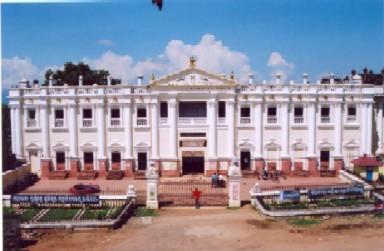Mayurbhanj is a land locked district with a total geographical area of 10418 Sq.km. and is situated in the Northern boundary of the state with district headquarters at Baripada. The district is bounded in the North-East by Medinipur district of West Bengal, Singhbhum district of Jharkhand in the North-west, Baleshwar district in the South-East and by Kendujhar in the South-West. More than 39 % of total geographical area (4049 Sq.Km.) is covered with forest and hills. The district comprises of 4 numbers of Sub-divisions with 26 nos of blocks with 404 Gram Panchayats and 3966 villages.

The district comes under “North Central Plateau agro-climatic region with an average rainfall of 1648.20 mm per annum. Being away from the coastal belt, the district experiences a sub-tropical climate with a hot summer, chilling winter with good precipitation. Red-laterite category of soil dominates all over the district including Bamanghati and Panchpir plateau.Mayurbhanj occupies a unique position being endowed with lush green vegetation, different fauna and rich cultural heritage. The district has a rich mineral base and is home to the Similipal Biosphere. This was a princely state until its merger with the state of Odisha on 1st January,1949. Since the date of its merger, Mayurbhanj has been organized and is administered as one of the districts of Odisha.
Iron-ore (hematite), vanadiferous and titaniferous magnetic, chaina clay, galena (lead ore), Kyanite, asbestos, steatite (soap stone) and quartzite constitute the principal mineral resources of Mayurbhanj district, of these the iron-ore deposits of Gorumahisani, Badampahar and Suleipat, which have been exploited for a period of about half a century, deserve special mention.







